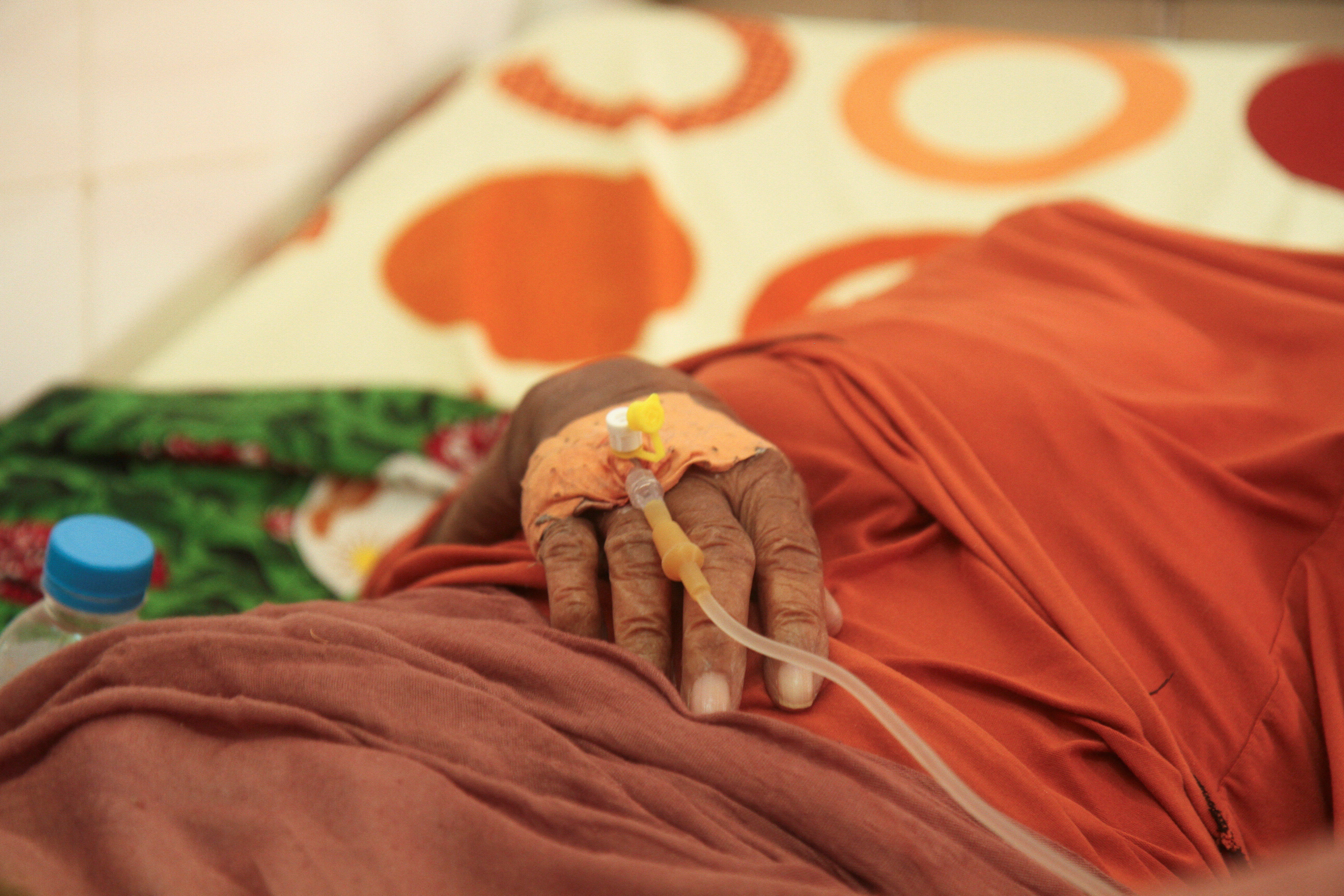How public-private partnerships could be the booster dose for India’s healthcare ecosystem
Public-private collaborations on healthcare in India accelerated vaccine delivery in the country.
Image: Reuters/Amit Dave
Stay up to date:
Health and Healthcare
Listen to the article
- The two biggest challenges affecting healthcare in India are affordability and accessibility, with urban and rural experiences varying greatly.
- COVID-19 catalyzed healthcare collaborations between public and private sectors as never before in diagnostics, technology and treatment.
- Experience shows that public-private partnerships could be used to improve healthcare delivery across India, particularly in more rural areas.
The two most prominent challenges in the sustained availability of equitable healthcare in India for all are affordability and accessibility. However, the COVID-19 pandemic has shown how public-private partnerships could address both issues for India’s rural communities.
Official figures highlight just how big these two hurdles are. To address affordability, the Indian government spends a mere 2.1% of GDP on healthcare compared to 9.7% across OECD countries, with more than half (55%) of healthcare expenditure coming out from the pockets of citizens.
With the total population of the world’s second most populated country estimated to be 1.4 billion, this financial burden pushes 55 million Indians into poverty every year.
When it comes to accessibility, India’s rural and urban populations have diametrically opposite experiences of healthcare. Urban residents, who account for just 28% of India’s population, have access to 66% of the country’s hospital beds, while the remaining 72% of the rural population have access to just one-third. Furthermore, 67% of doctors in India practise in urban areas.
Pandemic prompted collaborations on healthcare in India
But, during the recent COVID-19 pandemic, something rare happened. The pandemic catalyzed both the public and private sectors leading to collaborations like never before in diagnostics, technology and treatment for saving lives.
The synergies that were seen in the management of COVID-19, are unprecedented. The CoWin portal, a technology-backed public-private portal for the world’s largest COVID-19 vaccination drive in India, is the best example.
The pandemic has shown us strong evidence that by working together, the public and the private sectors can take quality healthcare in India to the last mile a lot faster and a lot more affordably.
At this juncture, it would be a massive failure on the part of the healthcare fraternity if we do not further explore the feasibility of such public-private partnerships (PPPs) in managing other deadly diseases that threaten humanity.
The private sector now has a rare opportunity to fundamentally redefine its relationships with health systems, healthcare providers and patients.
Success of PPP model in Indian healthcare
The PPP model has met with reasonable success in India over the past decade, backed by a slew of policy initiatives. The setting up of a public-private partnership appraisal committee has streamlined appraisals and approvals of projects, in addition to bringing in greater transparency and competitive bidding processes.
In 2021 alone, India received US$7.7 billion of committed investments across 25 projects, the largest in the South Asia Region. Whereas most countries in South Asia Region saw a sharp drop in PPI compared to 2020, India saw a 49% increase in private investment commitments.
As the resources are being pledged for PPP projects, it remains equally important that these initiatives are practically curated according to situations on the ground and aim for realistic outcomes.
Here are three ways that PPP projects can help address the problems of accessibility and affordability in rural Indian healthcare:
- Expertise: The private sector provides 58% of hospitals and 81% of doctors in India and this expertise pool is predominantly urban-centric. The public sector, in turn, has the basic last mile infrastructure in terms of sub-centres and primary health centres to reach the remotest populations. Making the private sector services and expertise available in these public health facilities could be a game changer.
- Technology: Technology is the primary driver for ensuring accessibility and affordability in many cases, including this scenario above. There is a reason why specialist resources are urban-centric, and we cannot afford to wait till this distribution goes on to become universal. Technology is the tool to be harnessed to take the urban expertise to rural settings with minimum physical movement of the patient or of the specialist. Telemedicine initiatives are a strong case in point, the national teleconsultation service eSanjeevani being an apt example.
- Efficiency: The PPP model can ensure that the existing medical infrastructure and resources be leveraged though optimum utilization, at an affordable cost to the end user.
There are already some PPP initiatives that are making good use of either one or more of the above-mentioned elements in their strategy and have either made or are making good progress towards the intended impact.
Pune Municipal Corporation’s recent Vaccine on Wheels programme, for example, aims to increase immunization in India through an equitable, affordable and convenient vaccination service for all by creating hospital-like sterile setups near their communities providing vaccination services.
Yeshasvini Cooperative Farmer’s Health Insurance Scheme, which was initiated by Narayana Hrudayalaya, Bangalore’s super speciality hospital and the Karnataka government, is a landmark initiative that has come as a great boon to the farmers in the state.
What is the World Economic Forum doing to improve healthcare systems?
Members can avail themselves of free surgery costing up to INR125,000 ($1,545) and INR200,000 for multiple surgeries and in urban Yeshasvini, the maximum limit of treatment per person for single admission is INR175,000 and for multiple admission is INR250,000 in the same year.
The Arogya Raksha scheme in Andhra Pradesh is another insurance scheme initiated by the state government, in collaboration with New India Assurance Company and private clinics wherein. End-to-end cashless services for 1,059 diseases under secondary and tertiary care are being provided through 400 government and corporate network hospitals.
Public-private partnerships can turn around healthcare
To conclude, we must re-emphasize that if used judiciously and well-curated to local settings and needs, the PPP projects can quickly turn around the prevalence of quality healthcare in India in resource-constrained settings in an affordable way.
Still, the current scenario is at a nascent stage, and a lot of distance is still to be covered. The need of the hour is to move from a transient basis of collaboration and instead establish a long-term mutually beneficial partnership model.
This will enable long-term relationships that can lead to sustainable improvements in health systems.
Don't miss any update on this topic
Create a free account and access your personalized content collection with our latest publications and analyses.
License and Republishing
World Economic Forum articles may be republished in accordance with the Creative Commons Attribution-NonCommercial-NoDerivatives 4.0 International Public License, and in accordance with our Terms of Use.
The views expressed in this article are those of the author alone and not the World Economic Forum.
Related topics:
Forum Stories newsletter
Bringing you weekly curated insights and analysis on the global issues that matter.
More on Health and Healthcare SystemsSee all
James See
November 7, 2025
Shyam Bishen
November 5, 2025
Naveena Nekkalapudi
October 31, 2025
Mariam Adebayo
October 30, 2025





